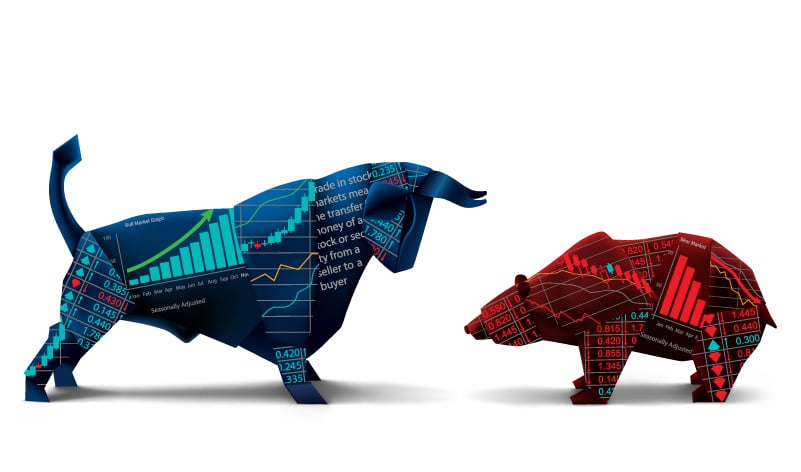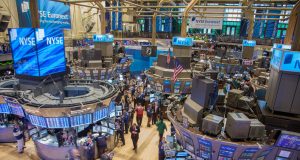August 30, 2025
Every successful investor knows a painful truth: knowing when to sell is often more critical than knowing what to buy.
While financial media overwhelmingly focuses on buying opportunities, our research consistently identifies companies facing significant headwinds that merit serious consideration for selling. These aren’t just stocks underperforming the market; they’re businesses confronting structural challenges, deteriorating fundamentals, or carrying valuations disconnected from financial reality.
What you won’t find here: reactionary calls based on short-term price movements or headline volatility. Each company on this list has been thoroughly analyzed across multiple metrics that historically precede substantial declines.
Smart investors understand that portfolio management requires both addition and subtraction. Sometimes the best investment decision is to redeploy capital away from troubling positions before problems fully materialize in the share price.
This week’s watchlist highlights stocks showing critical weaknesses that demand immediate attention:
Hormel Foods (HRL)
Hormel Foods demonstrates how even established consumer staples companies can face persistent headwinds when operational efficiency deteriorates despite modest top-line growth. The food giant’s 12.9% decline following third-quarter results reflects investor disappointment with an earnings miss that revealed concerning margin compression trends. While revenue of $3.03 billion slightly beat the $2.98 billion estimate, earnings per share of $0.35 fell significantly short of the $0.41 expectation, indicating fundamental challenges in converting sales growth into profitability despite the company’s scale advantages and established brand portfolio.
The forward guidance suggests these margin pressures are structural rather than temporary, with management projecting organic sales growth deceleration to just 1-4% in the current quarter compared to the prior period’s 6% rate. Perhaps more concerning is the expectation that earnings per share will decline year-over-year, from $0.42 to an estimated $0.38-$0.40 range, suggesting the company’s profit recovery timeline extends well into 2026. This guidance indicates management is struggling with cost inflation, competitive pricing pressures, or operational inefficiencies that scale advantages cannot overcome.
At $25.44 with a market capitalization of $14 billion, Hormel’s 4.53% dividend yield appears attractive but may face sustainability pressure if earnings continue declining. The extraordinary trading volume of 7.8 million shares versus the 3.5 million average suggests institutional investors are reassessing positions following the disappointing guidance revision. While the 16.34% gross margin provides some operational cushion, the persistent earnings pressure and growth deceleration create concerns about the company’s ability to maintain its dividend aristocrat status. For income-focused investors, the combination of declining earnings trends and potential dividend sustainability questions suggests considering alternatives with more predictable cash flow generation and clearer paths to margin recovery.
Krispy Kreme (DNUT)
Krispy Kreme faces mounting skepticism about its turnaround strategy as J.P. Morgan’s downgrade to underweight reflects analyst concerns that cost-cutting measures cannot substitute for fundamental revenue growth challenges. The donut maker’s 64% year-to-date decline following the cancelled McDonald’s partnership has created a crisis of confidence that management’s August 7th restructuring plan has failed to address convincingly. While the proposed international refranchising strategy and logistics outsourcing may reduce operational risk, these moves also lower total revenue and profit potential at a time when the company needs growth rather than contraction.
The fundamental problem facing Krispy Kreme extends beyond strategic execution to persistent negative organic growth trends that refranchising cannot resolve. With organic growth declining 0.8% in the most recent quarter, the company faces the dual challenge of stabilizing existing operations while implementing complex structural changes. J.P. Morgan analyst Rahul Krotthapalli’s skepticism about the timeline for executing these changes appears well-founded given the company’s existing $957 million debt load, which constrains financial flexibility during the transition period.
At $3.55 with a market capitalization of $608 million, Krispy Kreme trades near its 52-week low of $2.50 but still appears overvalued relative to its operational challenges and debt burden. The 14.58% gross margin provides minimal buffer against continued revenue weakness, while the 2.96% dividend yield may become unsustainable if cash flow generation remains pressured during the refranchising transition. With trading volume remaining below historical averages, suggesting limited institutional interest, Krispy Kreme appears caught between ambitious restructuring plans and deteriorating baseline business performance. For investors considering turnaround opportunities, the combination of persistent revenue declines, substantial debt load, and execution risks associated with major strategic changes suggests waiting for clearer evidence of stabilization before considering investment.
Marvell Technology (MRVL)
Marvell Technology confronts a credibility crisis following Bank of America’s downgrade that exposed significant uncertainty about the semiconductor company’s AI growth prospects and competitive positioning. The firm’s reduction from buy to neutral, accompanied by a price target cut from $90 to $78, reflects diminished confidence in management’s ability to capitalize on data center opportunities that had previously driven investor enthusiasm. Analyst Vivek Arya’s concerns about project timeline delays and market share uncertainties suggest the company’s AI narrative may have been overly optimistic relative to execution capabilities.
The guidance disappointment following second-quarter results that merely met expectations signals potential systematic issues with the company’s forecasting accuracy and competitive positioning in crucial growth markets. Bank of America’s reduction of 2026 data center growth expectations from 23-25% to mid-teens levels represents a substantial deceleration that undermines the premium valuation multiples investors had been willing to pay for AI exposure. The specific concerns about timing delays for Microsoft’s Maia project and uncertain share capture in Amazon’s next-generation initiatives suggest Marvell may be losing competitive ground to better-positioned rivals.
At $62.87 following an 18.6% decline and already down over 30% year-to-date, Marvell’s technical picture shows a stock under persistent pressure despite strong analyst coverage (32 buy ratings among 40 total). The average price target of $88.42 suggests potential upside, but Bank of America’s skepticism about near-term execution capabilities may prove more prescient than consensus optimism. With the semiconductor industry’s cyclical nature and increasing competition for AI-related projects, Marvell appears vulnerable to further multiple compression if additional guidance disappointments materialize. For investors seeking AI semiconductor exposure, the combination of execution concerns, competitive positioning questions, and already significant year-to-date decline suggests considering alternatives with clearer visibility into growth catalysts and market share expansion opportunities.







